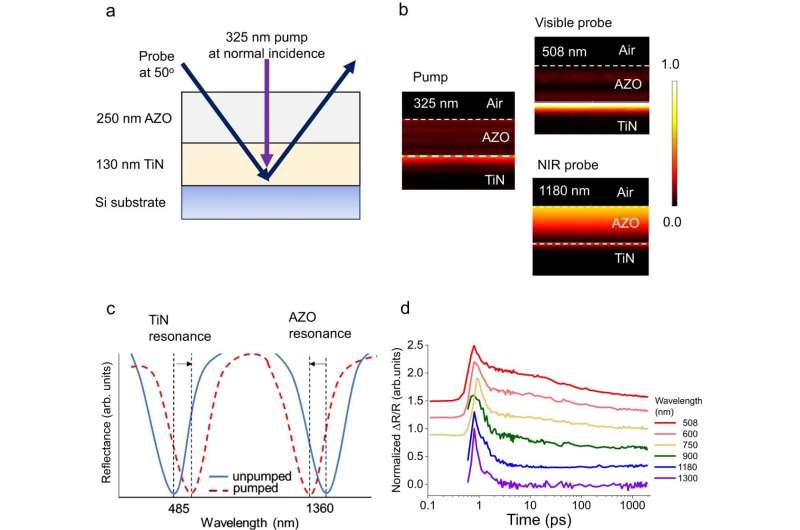
Conventional computer processors
have pretty much maxed out their "clock speeds"—a measurement of how
fast they can toggle on and off—due to the limitations of electronic switching.
Scientists looking to improve computer processors have become intrigued by the
potential of all-optical switching, which uses light instead of electricity to
control how data is processed and stored on a chip.
Researchers at the U.S. Department of Energy's (DOE) Argonne National Laboratory and Purdue University have recently created a new kind of all-optical switch that could realize this potential.
"Previous iterations of optical switches had fixed switching times that were 'baked in' to the device upon its fabrication," said Argonne's Soham Saha, one of the laboratory's Maria Goeppert Mayer postdoctoral fellows who is working in the Argonne Center for Nanoscale Materials, a DOE Office of Science user facility.
Saha and his colleagues have made an optical switch out of two different materials, each with a different switching time. One material, aluminum-doped zinc oxide, has a switching time in the picosecond range, while the other material, plasmonic titanium nitride, has a switching time more than a hundred times slower in the nanosecond range.
"When you use optical components instead of electronic circuits, there are no resistive-capacitive delays, which means that, in theory, you could operate these chips a thousand times faster than conventional computer chips," Saha said.
The difference in switching times between the two metal components means that the switch can be more flexible and transmit data quickly while storing it effectively, according to Saha. "The bimetallic nature of the switch means that it can be used for multiple purposes depending on the wavelength of the light that you use," he said. "When you want slower applications, like memory storage, you switch with one material; for faster applications, you switch with the other one. This capability is new."
In the experimental configuration, the materials of the switch function as light absorbers or reflectors, depending on the wavelength of operation. When they are switched on by a light beam, they switch state.
Controlling the speed of all-optical switches is crucial for optimizing their performance in various applications. These findings offer promise for the development of highly adaptable and efficient switches in fields like enhanced fiber optic communication, optical computing, and ultrafast science.
The ability to adjust switch speeds also brings us closer to bridging the gap between optical and electronic communications, enabling faster and more efficient data transmission.
This research provides valuable insights into the fundamental understanding of all-optical switches and paves the way for the design of advanced devices for computing and telecommunications.
A paper based on the research, "Engineering the temporal dynamics of all-optical switching with fast and slow materials," is published in Nature Communications.

 Previous page
Previous page Back to top
Back to top







